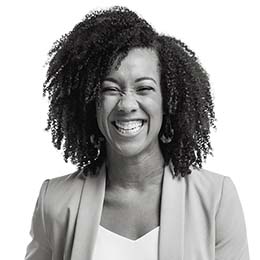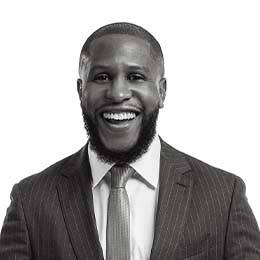Adopt an Inclusive Leader’s Mindset — and Put It Into Practice
le originally appeared on Microlearning, our bite-sized online solution for leaders and individual contributors.

Do you want to lead a team that brings their best effort and a wide range of skills and perspectives to their work? Then it’s up to you to be an inclusive leader who makes sure everyone on your team feels valued and respected. These five beliefs can help you adopt an inclusive mindset that shapes how you hire people, connect with and develop them, help them advance, and work with them to build team culture.
1. I believe that every direct report can and should get better in at least one important area.
Some managers may think certain direct reports aren’t capable of growing — or don’t want to. One manager told us they’d basically written off trying to develop one member of their team because the person was “just here for a paycheck.” But assuming someone doesn’t have it in them to grow is probably the best way to assure that they won’t.
The truth is nearly everyone wants to learn and grow. And when people are held back, our research shows that they often feel it’s not due to their lack of interest or ability but because they’re not one of their manager’s “favorites.”
Consider this: Would you want your boss to believe that you’ve already fulfilled all of your potential — or that your best is yet to come?
Put it into practice:
- Give encouraging, growth-oriented feedback and coaching. Much of the feedback you give your direct reports likely evaluates something they’ve done, pointing out what went wrong or what needs to improve. And while that kind of evaluative feedback can be necessary, you can foster their growth by offering developmental feedback that focuses on the future and encourages them to come up with their own potential solutions.
- Evaluative feedback: “That slide in your presentation was too complicated.”
- Developmental feedback: “Let’s talk through some ways to simplify your presentation slides going forward. I want to hear your ideas, and I can share some tips.”
- In performance conversations, help people determine their most important growth areas. If your performance conversations focus mainly on evaluating what happened in the past, you miss a valuable opportunity to direct the person’s growth. Before a performance conversation, consider potential areas where your direct report could grow and ask them to think about it, too: “What’s the top skill or growth area you want to focus on?” Then, during the conversation, align on where they could devote their time and energy.
2. I believe that the best way to develop my direct reports is to tailor the support I give to each person.
It can be tempting to assume that your team members want the same kind of support that you wanted when you were in their position. But support is not one size fits all.
If you’ve not had to adjust your schedule to take care of a family member, you might not realize the value of a flexible schedule to a direct report. Or maybe when you were starting out, you appreciated the boss who gave you the autonomy to figure things out on your own — so that’s the kind of boss you try to be. But your direct report might learn more effectively with more coaching or by teaming with a senior colleague. There are many ways to support your team, and each team member has different needs.
Put it into practice:
- Ask people what sort of support they think they need. This direct approach may work best when you have a strong personal connection with a direct report. Try:
- “For which specific areas of your work would you like more or less direction from me?”
- “How might we make it easier for you to meet your family and work obligations?”
If they don’t know what kind of support they need, ask them if they’re up for co-developing a coaching plan with you.
- Regularly check in on people’s well-being. If you haven’t talked with your team about their well-being, let everyone know that you’ll be checking in with them at their 1-on-1s. When you don’t have a strong personal connection with a direct report, you might become a hyper-efficient problem-solver — fixing what you can and moving on. But you risk missing the big picture — the person’s workload, their stress and energy levels, their work/life boundaries, and their connection to their work and colleagues. Plus you squander opportunities to help them thrive and grow. Make a habit of starting off your 1-on-1s by discussing how each person is doing. If it helps, make it a recurring agenda item.
3. I believe that every team member is responsible for creating and maintaining an inclusive team culture.
Your team has a culture. It shows up in how you interact with each other, what you expect of each other, how you make decisions — and in many other ways. If you haven’t made a conscious effort to create a culture where everyone feels valued, your culture is likely not as inclusive as it could be.
As a leader, you have an important role to play, but your team’s behavior largely defines your culture, so include them in shaping it. In our research, 50 percent of direct reports told us that they’ve tried but they couldn’t influence their team’s culture. By definition, they are on non-inclusive teams.
Put it into practice:
- Ask those who seem to be “on the outside” of the team culture how to improve inclusion. Try asking, “What’s one thing you experienced on a previous team that you think helped build a healthy, inclusive culture?” While they might not immediately suggest how your team culture could improve, if you show sincere interest and a willingness to make changes, they’ll be more likely to share their perspective.
And consider asking for their views of the company’s culture. They might be more open to sharing information that’s not directly related to you. What you learn might give you ideas for changes you can make at the team level to compensate for organizational shortcomings. For example, if you hear that your organization’s higher-ups have been lousy at recognizing successes, you might increase your recognition of your team’s efforts (and possibly share feedback with your boss about how the organization could improve).
- Start defining your team’s culture. You might not know how to begin talking with your team about inclusive culture — but don’t be intimidated. People mostly want to feel heard, respected, and involved, and to express themselves to the extent they want. You can solicit ideas from each team member and dedicate one or more team meetings to establishing the team’s values.
4. I believe in considering a broad range of people when hiring and promoting.
Seventy-six percent of managers we surveyed told us that as soon as they got approval to make a hire, they had the “right” person in mind. And 53 percent said they can tell if someone has the potential to be promoted the moment they’re hired — before they’ve done any work. When you become convinced that only one type of person can succeed in a role, you narrow your view and let talented, qualified candidates pass you by. But when you cast a wide net for your pool of candidates — both in your initial search and in your evaluation process — you have a better chance of building a more complete, versatile team with diverse skills and perspectives.
Put it into practice:
- Expand your candidate outreach. When you have an open position or role, carefully consider people on your team and elsewhere in your organization, and encourage internal candidates to apply. For external candidates, recruit more diverse candidate pools by tapping (or asking HR to tap) sources that draw from historically underrepresented groups. And consider people with a wide range of previous experience (e.g., military service, other industries) who have the core skills to do the job.
- Expand your definition of how a candidate might express a core competency. For instance, if a core competency is having a client focus, could a candidate demonstrate strong client relations outside of your specific industry?
- Proactively discuss with each team member their path to a promotion. Managers often leave it to their direct reports to raise the topic of promotions. But many team members — especially those with less face time with you or who don’t see people who share their identities occupying higher roles in the organization — may not know if advancing is possible. Share what you can — whether that’s the skills they need to display, the standards they need to meet, or the relationships they need to build. If you don’t know, ask your manager or HR. And if they don’t know, you may have the opportunity to shape the standards on your team.
5. I believe that having established standards lets me measure against them — and make less-biased decisions.
It’s tempting to give a job or a promotion to the candidate who presents their case most compellingly. But doing so could place more value on self-presentation than on the skills required for the job. For a position where someone will be analyzing data and solving complex problems all day, how much does it matter if they get nervous and fumble their words during an interview? Having standards to meet for a role’s core competencies can keep you focused on the most relevant skills when hiring and promoting.
Put it into practice:
- Standardize best practices for evaluating candidates. Even if your organization has established evaluation practices for hiring and promotions, you may be able to make your own process more inclusive. Ask HR to remove candidates’ names from resumes so that you can evaluate them blindly. Define the core competencies and standards candidates will be judged against. And use the same test projects or behavioral/situational interview questions for each candidate.
- Evaluate candidates on multiple data points. When evaluating people, you might be tempted to “go with your gut.” Your intuition is a feeling that’s based on your experience, so you shouldn’t disregard it. But if you rely too much on one data point — whether that’s your intuition, a stellar resume, or a sparkling interview — you risk making a bad decision.
No single success is enough to prove that a person is right for a role. Push yourself to get a more complete understanding of each candidate’s strengths and weaknesses. If a candidate’s application blows you away, don’t disregard evidence to the contrary that you gather during the interview. And don’t promote someone based on their one exciting new idea without considering the contributions of your other direct reports who might also be interested in a promotion.
By adopting these beliefs, you can build a stronger team and bring an inclusive mindset to everything you do as a leader.










